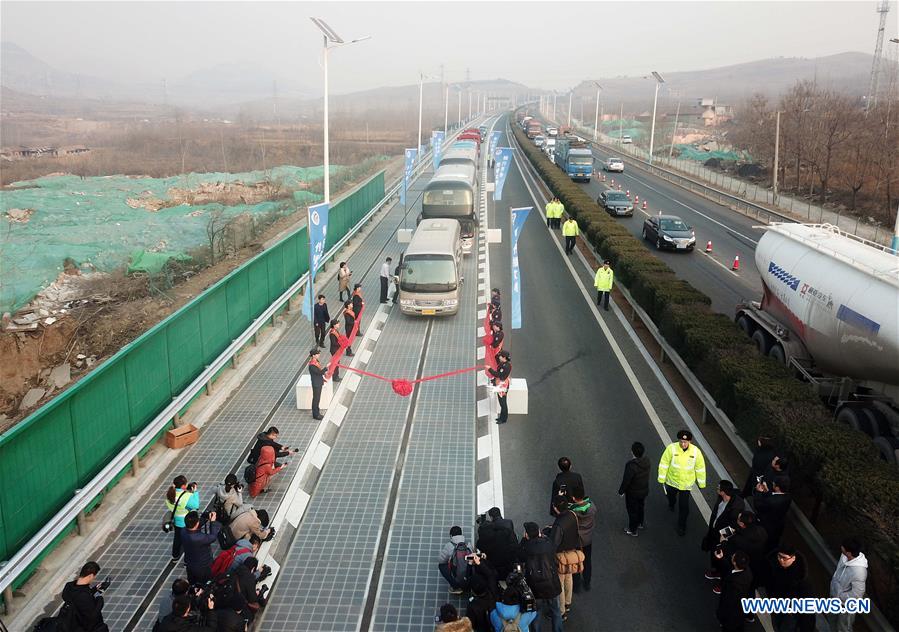
Perhaps more so than any other developed country, China is confronted with the effects of pollution and is therefore establishing vast amounts of renewable energy infrastructure – of which the nation’s solar highway is a particularly innovative example.
In 2015, China overtook Germany as the largest producer of photovoltaic power and two years later solar accounted for 118.2TWh of the country’s energy mix – by 2050, it aims to increase its capacity from 130GW to 1,300GW.
What is China’s solar highway?
In late-2017, China opened its 1km solar highway in the Shandong province’s capital Jinan, south of Beijing.
It spans 5,875 sq m and is capable of generating up to 1GWh every year – enough to power 800 homes.
However, the Chinese government plans to use the electricity created by its solar highway to power street lights, billboards and CCTV cameras, as well as to heat the roads surface to melt any snow that gathers on it.
In its first 14 weeks in operation, the road generated 96MW of energy.

It comprises a protective surface layer made of transparent concrete, which can reportedly handle 10-times the pressure of standard asphalt.
Beneath that is a middle layer of solar-powered batteries, which generates the road’s electricity, above a waterproof insulation layer to prevent any dampness from the ground below.
It’s estimated that roughly 40,000 cars will be able to drive over the solar highway every day, with two lanes to choose from in addition to an emergency lane to help ease congestion.
Price estimates for the project vary but most hover around the $2.7m (£2.1m) mark, assuming the highway costs about $458 (£347) per sq m – 90-times more than the $5 per sq m for regular roads.
Xu Chunfu, chairman of the project’s developer Qilu Transportation Development Group, said: “The project will save the space for building solar farms and shorten the transmission distance.
“With the development of solar power in China, the cost can be further reduced.”
His design teams argues if two lanes of every expressway in China was to be fitted with the solar panels surface as seen in Jinan, together they would generate 7 million GWh of power every year.
This is equivalent to almost 1.3-times the amount of China’s total residential energy consumption 2015, and would cut greenhouse gas emissions by 7.2 billion tonnes.






